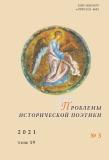Два доктора: Осип Дымов и Шарль Бовари (Интертекстуальная структура рассказа Чехова «Попрыгунья»)
Osip Dymov and Charles Bovary (The Intertextual Structure of Chekhov’s Short Story The Fidget)
Author(s): Sergey A. KibalnikSubject(s): Novel, Short Story, Comparative Study of Literature, French Literature, Russian Literature, 19th Century, Philology, Theory of Literature
Published by: Петрозаводский государственный университет
Keywords: Chekhov; Flaubert; Tolstoy; Krylov; doctor; physician; medicine; pretext; intertext; hypertext; short story; structure; novеl; fable; parable;
Summary/Abstract: A. P. Chekhov’s short story The Fidget (1892) is an abridged hypertext of G. Flaubert’s novel Madame Bovary (1856). The article undertakes a detailed comparison of the characters who occupy a similar place in the narrative and figurative system of these two works: Osip Dymov and Charles Bovary. Both of them are doctors, but Chekhov’s character seems to realize the untapped potential that was laid down in the character penned by Flaubert. He is no longer a failed doctor, but a talented one, with all the qualities required to become an excellent medical scientist. Thus, Chekhov does not merely stand up for the medical community, which he is no stranger to. Thanks to this, the story of the Russian writer transforms into a polemical interpretation of the classic French novel. In Flaubert’s Emma’s imaginary search for the meaning of life, which explains her two adulteries in Madame Bovary, Chekhov seems rather inclined to see the selfishness and lack of responsibility that destroy her family and lead to her own death. It is not by chance that Dymov, rather than Olga Ivanovna dies as a result of her own similar behavior in Chekhov’s short story. At the same time, Chekhov’s text is also a polemical interpretation of Tolstoy’s Anna Karenina (1873–1877), which was created as an explicit hypertext of Flaubert’s novel. In the short story, Chekhov’s critical reinterpretation of these two works is clearly based on a kind of “folk” morality of the Ant from the canonical Krylov fable The Dragonfly and the Ant (1808), which is clearly referenced in the title and text of the story. The intertextual structure of Chekhov’s story is examined in the article primarily as a system of its pretexts, some of which relate to it in unison, and others-dissonantly. At the same time, the former are the object of polemical interpretation, while the latter are the subject of stylization and value orientation.
Journal: Проблемы исторической поэтики
- Issue Year: 19/2021
- Issue No: 3
- Page Range: 187-205
- Page Count: 19
- Language: Russian

